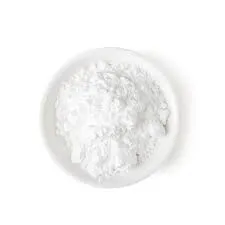Understanding Plastic Additives A Comprehensive Overview
Plastics have become an integral part of our daily lives, used in everything from packaging and household items to automotive parts and medical devices. However, the versatility of plastics is greatly enhanced by the use of additives. These substances are essential in improving the performance, durability, and appearance of plastic products. In this article, we will explore the different types of plastic additives, their functions, and their significance in the plastics industry.
What are Plastic Additives?
Plastic additives are chemical substances incorporated into plastic materials to modify their properties. These additives can enhance characteristics such as flexibility, transparency, heat resistance, and stability. The inclusion of additives allows manufacturers to tailor the properties of plastic to suit specific applications, making them more versatile and effective.
Types of Plastic Additives
Plastic additives can be classified into several categories based on their functions
1. Stabilizers These additives are essential for preventing degradation of plastics during processing and usage. For instance, heat stabilizers protect plastics from thermal degradation when exposed to high temperatures, while UV stabilizers prevent the breakdown of polymers due to exposure to ultraviolet light.
2. Plasticizers By adding plasticizers, manufacturers can increase the flexibility and workability of a plastic. Commonly used in polyvinyl chloride (PVC), plasticizers reduce brittleness and enhance the material’s elasticity, making it suitable for a wide range of applications such as flooring, cables, and medical devices.
3. Fillers Fillers are incorporated to improve the mechanical properties of plastic, reduce production costs, and enhance specific characteristics like tensile strength and thermal stability. Examples of fillers include calcium carbonate, talc, and glass fibers. These additives can also improve the overall appearance of the plastic.
4. Colorants Color additives are used to impart specific colors to plastic products. Pigments and dyes can be added to achieve aesthetic appeal or to provide functionality, such as color coding for safety purposes. Colorants play a vital role in consumer products, attracting attention and facilitating brand recognition.
plastic additives list

5. Flame Retardants To enhance the safety of plastic products, flame retardants are added to mitigate the risk of fire. These additives decrease the flammability of plastics, making them suitable for use in construction materials, electronics, and automotive components. They can be phosphorus-based, halogenated, or non-halogenated.
6. Antioxidants Oxidation can lead to the deterioration of plastic properties over time. Antioxidants are added to prevent this chemical reaction, prolonging the lifespan of plastic products. They are particularly critical in products that are exposed to heat and oxygen.
Importance of Plastic Additives
The significance of plastic additives cannot be overstated. They not only improve the functionality and longevity of plastic materials but also contribute to sustainability efforts. By enhancing the performance of plastics, additives can reduce the amount of material needed for production, leading to decreased waste and lower environmental impact.
Moreover, as the industry evolves, there is a growing demand for eco-friendly additives. Many manufacturers are exploring bio-based or biodegradable alternatives to traditional additives, aiming to minimize the environmental footprint of plastic products.
Challenges and Future Developments
Despite their benefits, the use of plastic additives raises environmental and health concerns, particularly regarding certain chemical compounds. Regulatory bodies are continuously assessing the safety of additives, pushing for the development of safer alternatives. This regulatory environment encourages innovation, leading to advancements in additive technology.
The future of plastic additives looks promising, with research focusing on the development of multi-functional additives that can serve several roles simultaneously. Moreover, advancements in nanotechnology may lead to the creation of new high-performance additives that can significantly enhance plastic properties with minimal environmental impact.
In conclusion, plastic additives play a critical role in defining the performance and characteristics of plastic materials. By understanding the various types of additives and their functions, we can appreciate the complexity involved in plastic production and the ongoing efforts to make plastics more sustainable for the future.

